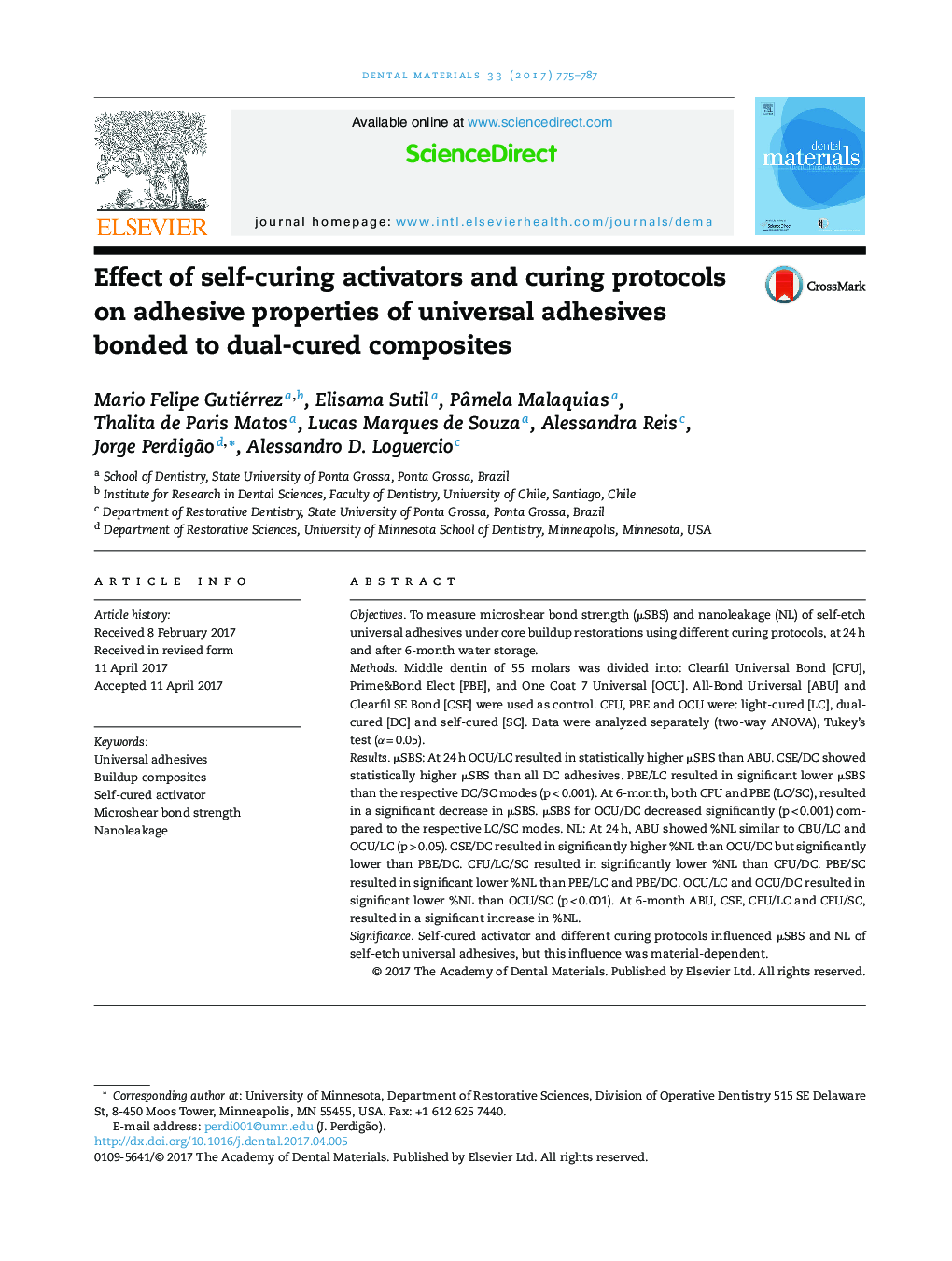| Article ID | Journal | Published Year | Pages | File Type |
|---|---|---|---|---|
| 5432934 | Dental Materials | 2017 | 13 Pages |
â¢Dual-cured 2-step self-etch adhesive is recommended for buildup restorations with dual-cured resin composites.â¢The in vitro behavior of universal adhesives depends on the curing more and the specific composition of each adhesive.â¢In general, the dentin sealing ability worsens after water storage for all adhesives.
ObjectivesTo measure microshear bond strength (μSBS) and nanoleakage (NL) of self-etch universal adhesives under core buildup restorations using different curing protocols, at 24 h and after 6-month water storage.MethodsMiddle dentin of 55 molars was divided into: Clearfil Universal Bond [CFU], Prime&Bond Elect [PBE], and One Coat 7 Universal [OCU]. All-Bond Universal [ABU] and Clearfil SE Bond [CSE] were used as control. CFU, PBE and OCU were: light-cured [LC], dual-cured [DC] and self-cured [SC]. Data were analyzed separately (two-way ANOVA), Tukey's test (α = 0.05).ResultsμSBS: At 24 h OCU/LC resulted in statistically higher μSBS than ABU. CSE/DC showed statistically higher μSBS than all DC adhesives. PBE/LC resulted in significant lower μSBS than the respective DC/SC modes (p < 0.001). At 6-month, both CFU and PBE (LC/SC), resulted in a significant decrease in μSBS. μSBS for OCU/DC decreased significantly (p < 0.001) compared to the respective LC/SC modes. NL: At 24 h, ABU showed %NL similar to CBU/LC and OCU/LC (p > 0.05). CSE/DC resulted in significantly higher %NL than OCU/DC but significantly lower than PBE/DC. CFU/LC/SC resulted in significantly lower %NL than CFU/DC. PBE/SC resulted in significant lower %NL than PBE/LC and PBE/DC. OCU/LC and OCU/DC resulted in significant lower %NL than OCU/SC (p < 0.001). At 6-month ABU, CSE, CFU/LC and CFU/SC, resulted in a significant increase in %NL.SignificanceSelf-cured activator and different curing protocols influenced μSBS and NL of self-etch universal adhesives, but this influence was material-dependent.
